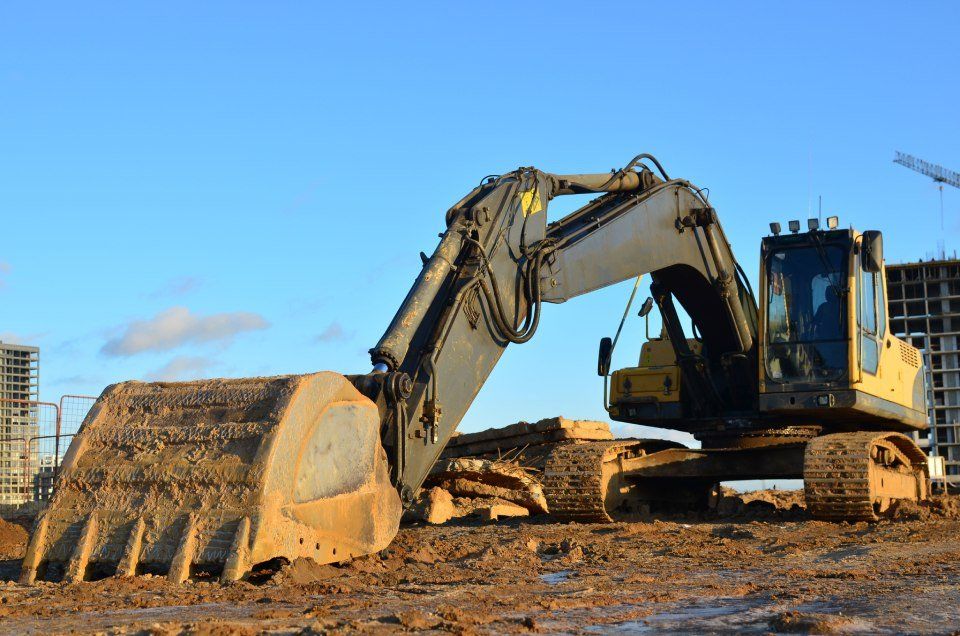Jet grouting - monofluid, bi-fluid and tri-fluid
Jet grouting allows the realization of columns and bulkheads through the treatment of the soil in situ; it occurs with the high-pressure injection of a stabilizing mixture, usually cement-based, through nozzles placed at the end of a rotating rod that is progressively extracted.
Jet grouting is an extremely flexible process, however some types of terrain make this technological choice ineffective or uneconomic: in general, the limits are represented by consolidated clays and coarse gravels (pebbles) with significant sizes; although pebbles and boulders limit the effectiveness of this technology, in some projects jet grouting is also provided in this limit stratigraphy and the boulders are cushioned by the injection.
The size of the columns, from 60 cm to over 400 cm in diameter, although conditioned by the type of soil, is a function of the jetting technique used.
Monofluid
The cement mixture is pumped at a pressure of up to 600 bar through the hollow rods to one or more nozzles at the end of the rods.
Bifluid
The rod used has a double cavity, one for the pressurised mixture and one for the compressed air, which helps cut the soil by implementing the projection of the mixture.
TRIFLUID
Similar to the previous one, in addition to compressed air, a pressurized water jet is also operated for the same purposes.

Slide title
Write your caption hereButton

Slide title
Write your caption hereButton
Realizations
Currently with jet grouting technology are made:
isolated circular columns from vertical to sub-horizontal for soil consolidation;
reinforced circular columns, with tubular reinforcement or steel girders, for the formation of bulkheads;
concatenated circular columns for the formation of bottom caps;
circular or elliptical secant columns for the formation of bulkheads or baffles;
thin diaphragms through the use of the one-way jetting technique.
Marini Ermenegildo S.p.A. boasts considerable experience acquired over the decades and has a wide range of modern equipment for the execution of this type of work.
Elliptical jet grouting - Bulkheads
Bulkheads are elliptical columns interpenetrated with each other at a spacing less than the longitudinal length; they are made in sequence (fresh) or in alternating sequence (primary/secondary columns).
-
Learn more
The techniques used for the construction of a bulkhead in jet grouting take up the schemes adopted in microperforation, combining consolidated practice with the possibility of simultaneously waterproofing the front of the excavation in order to implement greater safety conditions during the excavation phase, avoiding the treatment of the fronts with spritz concrete.
Their execution is faster, with fewer joints, with less bleeding and without waste of stabilizing mixture necessary to ensure the thickness of the bulkhead in the case of use of circular columns; their longitudinal length, depending on the treated soils, is equal to the diameter obtainable in a circular column (over 450 cm), with the advantage that the thickness, regardless of the length of the "panel", can be contained in the order of 40-60-80-100 cm.
Depending on their overall structure, bulkheads are classified into:
- Simple bulkhead: made with elliptical columns usually of considerable thickness to counteract the thrust at the back of the bulkhead; it is suitable for excavation fronts of modest depth.
- Reinforced bulkhead: like the previous one, but using lower thicknesses, with the insertion of girders or tubular steel to give greater inertia to the bulkhead. The use of elliptical columns allows the insertion of reinforcements "off-axis" thus increasing the inertia of the bulkhead itself.
- Complex bulkhead: is the set of drilled piles (primary piles) and elliptical columns, reinforced or not (secondary piles); this bulkhead ensures the hydraulic retention, offering at the same time a considerable inertia conferred by the structure of the piles. There are significant advantages in terms of execution time because during the execution of the secondary piles it is not necessary to provide for the reduction of the intersections of the primary piles.
- Tensioned bulkhead: it allows to reach considerable excavation depths according to the number of orders of tie-rods adopted; in order to reduce costs and construction times, the contrast to the thrust from behind can be increased with an order of tie-rods at the head (on the crowning beam), or with the use of metal contrasts placed on the crowning beam near the corners or between parallel sides of modest length.
HEADQUARTER
Via della Provvidenza 145
35030 Rubano (PD)
OPENING HOURS
- Mon - Fri
- - -
- Sat - Sun
- Closed





